|
|
|
Sort Order |
|
|
|
Items / Page
|
|
|
|
|
|
|
| Srl | Item |
| 1 |
ID:
105420


|
|
|
| 2 |
ID:
133617
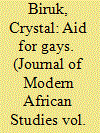

|
|
|
|
|
| Publication |
2014.
|
| Summary/Abstract |
In recent years, 'African homophobia' has become a spectacle on the global stage, making Africa into a pre-modern site of anti-gay sentiment in need of Western intervention. This article suggests that 'homophobia' in post-2009 Malawi is an idiom through which multiple actors negotiate anxieties around governance and moral and economic dependency. I illustrate the material conditions that brought about social imaginaries of inclusion and exclusion - partially expressed through homophobic discourse - in Malawi. The article analyses the cascade of events that led to a moment of political and economic crisis in mid-2011, with special focus on how a 2009 sodomy case made homophobia available as a new genre of social commentary. Employing discourse analysis of newspaper articles, political speeches, the proceedings of a sodomy case, and discussions about men who have sex with men (MSM) as an HIV risk group, I show how African homophobia takes form via interested deployments of 'cultural' rhetoric toward competing ends. This article lends a comparative case study to a growing literature on the political and social functions of homophobia in sub-Saharan Africa.
|
|
|
|
|
|
|
|
|
|
|
|
|
|
|
|
| 3 |
ID:
133618
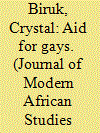

|
|
|
|
|
| Publication |
2014.
|
| Summary/Abstract |
In recent years, 'African homophobia' has become a spectacle on the global stage, making Africa into a pre-modern site of anti-gay sentiment in need of Western intervention. This article suggests that 'homophobia' in post-2009 Malawi is an idiom through which multiple actors negotiate anxieties around governance and moral and economic dependency. I illustrate the material conditions that brought about social imaginaries of inclusion and exclusion - partially expressed through homophobic discourse - in Malawi. The article analyses the cascade of events that led to a moment of political and economic crisis in mid-2011, with special focus on how a 2009 sodomy case made homophobia available as a new genre of social commentary. Employing discourse analysis of newspaper articles, political speeches, the proceedings of a sodomy case, and discussions about men who have sex with men (MSM) as an HIV risk group, I show how African homophobia takes form via interested deployments of 'cultural' rhetoric toward competing ends. This article lends a comparative case study to a growing literature on the political and social functions of homophobia in sub-Saharan Africa.
|
|
|
|
|
|
|
|
|
|
|
|
|
|
|
|
| 4 |
ID:
067378
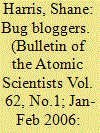

|
|
|
| 5 |
ID:
116824


|
|
|
|
|
| Publication |
2012.
|
| Summary/Abstract |
The Earth's population is aging fast, and the coming sharp increase in the number of people over age sixty-five will bring with it an epidemic of age-related neurodegenerative diseases, such as Alzheimer's and Parkinson's diseases. Currently, no cures exist for the major neurologic disorders. Unless cures can be found, by 2050 the cost of these diseases will exceed $1 trillion annually in the United States, and the burden for other countries will scale with their populations. Despite exciting advances in our understanding of these diseases, both government research funding and the efforts of industry have failed to keep pace with this unmet medical need. Private philanthropy has done better, but the total dollars spent on developing diagnostics and therapeutics for neurologic disorders still lags far behind that spent on much less prevalent diseases. The challenge for biomedical research in the next forty years is to identify markers that would allow early detection of high-risk cohorts, and to develop therapies that either will prevent the diseases from starting at all in susceptible populations or will arrest their progression before severe damage to the central nervous system has occurred.
|
|
|
|
|
|
|
|
|
|
|
|
|
|
|
|
| 6 |
ID:
116894
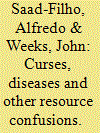

|
|
|
|
|
| Publication |
2013.
|
| Summary/Abstract |
Natural resource rents, development assistance and unrequited foreign exchange inflows such as remittances relax the balance of payments constraint on economic growth. The failure of some governments to translate these resources into successful development has been attributed to an affliction called 'Dutch disease', or, more ominously, to a 'curse' associated with the availability of natural resources. This paper examines the disease/curse analysis and rejects it in favour of a political economy explanation of the problems associated with resource use. We argue that conventional analysis of resource-rich countries is misleading because its various manifestations are based on inappropriate assumptions and flawed logic. In practice the 'curse' and the 'disease' are outcomes of policy decisions, rather than manifestations of deep structural weaknesses, and they are more likely to be suffered in countries whose governments pursue neoliberal economic policies.
|
|
|
|
|
|
|
|
|
|
|
|
|
|
|
|
| 7 |
ID:
125309
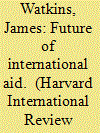

|
|
|
|
|
| Publication |
2013.
|
| Summary/Abstract |
By 2015, we will have nearly eradicated extreme poverty and hanger throughout the world by halving the proportion of people living on under $1.25 per day. We will have achieved universal primary education worldwide, reduced child mortality rates by two thirds, and halted and reversed the spread of HIV/AIDS, malaria and other diseases. We will have promoted gender equality, improved maternal health, and ensured environmental sustainability. Or at least, this is the promise that we made to ourselves, and to each other, almost 15 years ago.
|
|
|
|
|
|
|
|
|
|
|
|
|
|
|
|
| 8 |
ID:
092713


|
|
|
| 9 |
ID:
105155
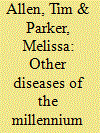

|
|
|
|
|
| Publication |
2011.
|
| Summary/Abstract |
The sixth MDG aims 'to combat HIV/AIDS, TB, malaria and other diseases'. The residual category of 'other diseases' has become the focus of intense interest, partly because it has provided an opportunity to increase resources for the control of the mostly parasitic 'neglected tropical diseases' (NTDs). Intense lobbying has secured large amounts of funding from donors, as well as generous donations of medicines from the major drug companies. A massive programme is now underway to treat the parasites of the poor in Africa via integrated vertical interventions of mass drug administration in endemic areas. The approach has been hailed as remarkably effective, with claims that there is now a real prospect of complete control and, for some NTDs, even elimination. However, a closer look at evaluation and research data reveals that much less is known about what is being achieved than is suggested. Competition between implementing organisations is leading to potentially counterproductive exaggerations about treatment coverage. Detailed local-level research in Uganda and Tanzania shows that actual rates of drug take-up among target populations are often lower than is necessary to effectively control the diseases, and that methods of drug distribution may even lead to active resistance to treatment. If current trends are not corrected, declining rates of NTD infection will not be sustained. Much more rigorous and effective monitoring is essential.
|
|
|
|
|
|
|
|
|
|
|
|
|
|
|
|
| 10 |
ID:
124294
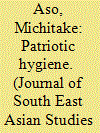

|
|
|
|
|
| Publication |
2013.
|
| Summary/Abstract |
This article examines knowledge production about malaria in colonial and postcolonial Vietnam. During the 1920s and 1930s, medical doctors cooperated with plantation managers in order to develop industrial hygiene techniques consisting of environmental modification and quinine use. By the 1930s, changing motivations, in particular racial hygiene and patriotism, drove malaria control efforts. The wartime pressures to control malaria between the 1940s and 1975 further encouraged patriotic hygiene. This history of malaria science in Vietnam highlights the tension between change and continuity and shows the importance of place in the conjunction of scientific knowledge production and nation-building projects.
|
|
|
|
|
|
|
|
|
|
|
|
|
|
|
|
| 11 |
ID:
101166


|
|
|
|
|
| Publication |
2010.
|
| Summary/Abstract |
Drawing on a range of recent studies and original sources, this article calls for a revision of the usual paradigm of disease in Ottoman history by applying a more interdisciplinary approach and new insights from environmental history. The historiography of disease in the Middle East developed from the late 1970s to the early 1990s envisioned a steady mortality from inevitable cycles of bubonic plague supposedly accepted with pious resignation by Ottoman Muslims. Focusing on the period from circa 1500 to 1800, the article advances three arguments. First, Ottoman Muslims sometimes did take action to escape or contain epidemics. Second, the region actually suffered from a variety of other infections that together had an equal or greater impact than bubonic plague. Third, shifting political, social, and environmental conditions-especially Little Ice Age climate fluctuations and population movements during the 17th century-played a major role in disease mortality and Ottoman demography.
|
|
|
|
|
|
|
|
|
|
|
|
|
|
|
|
| 12 |
ID:
097857
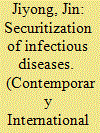

|
|
|
| 13 |
ID:
124087


|
|
|
|
|
| Publication |
2012.
|
| Summary/Abstract |
How many hours do you work each week? How much time do you need to work? These questions plague our society in the form of a well addressed diseases and addiction we call workaholism. Nowadays we are all required to accomplish more with less.
|
|
|
|
|
|
|
|
|
|
|
|
|
|
|
|
| 14 |
ID:
123273
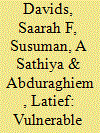

|
|
|
|
|
| Publication |
2013.
|
| Summary/Abstract |
Child mortality in Sierra Leone is the highest ranked in the world. The main causes for child mortality are maternal factors, environmental factors and health factors. Minimal research has been carried out on health factors in Sierra Leone. The objective of this study is to see how maternal and environmental factors have an effect on health factors, which in turn cause child mortality. The data used were from the 2008 Sierra Leone Demographic and Household Survey (SLDHS). The study showed that child mortality had statistically significant factors associated with it: place of residence, birth number, religion and type of toilet facility. Furthermore, the SLDHS had not given much information regarding the cause of diseases affecting children, so we looked only at the effects they had on children. Acute respiratory infections, diarrhoea and measles each had one variable that was statistically significant. As for pneumonia, there were no variables associated with children contracting the disease.
|
|
|
|
|
|
|
|
|
|
|
|
|
|
|
|
|
|
|
|
|